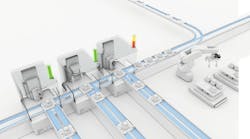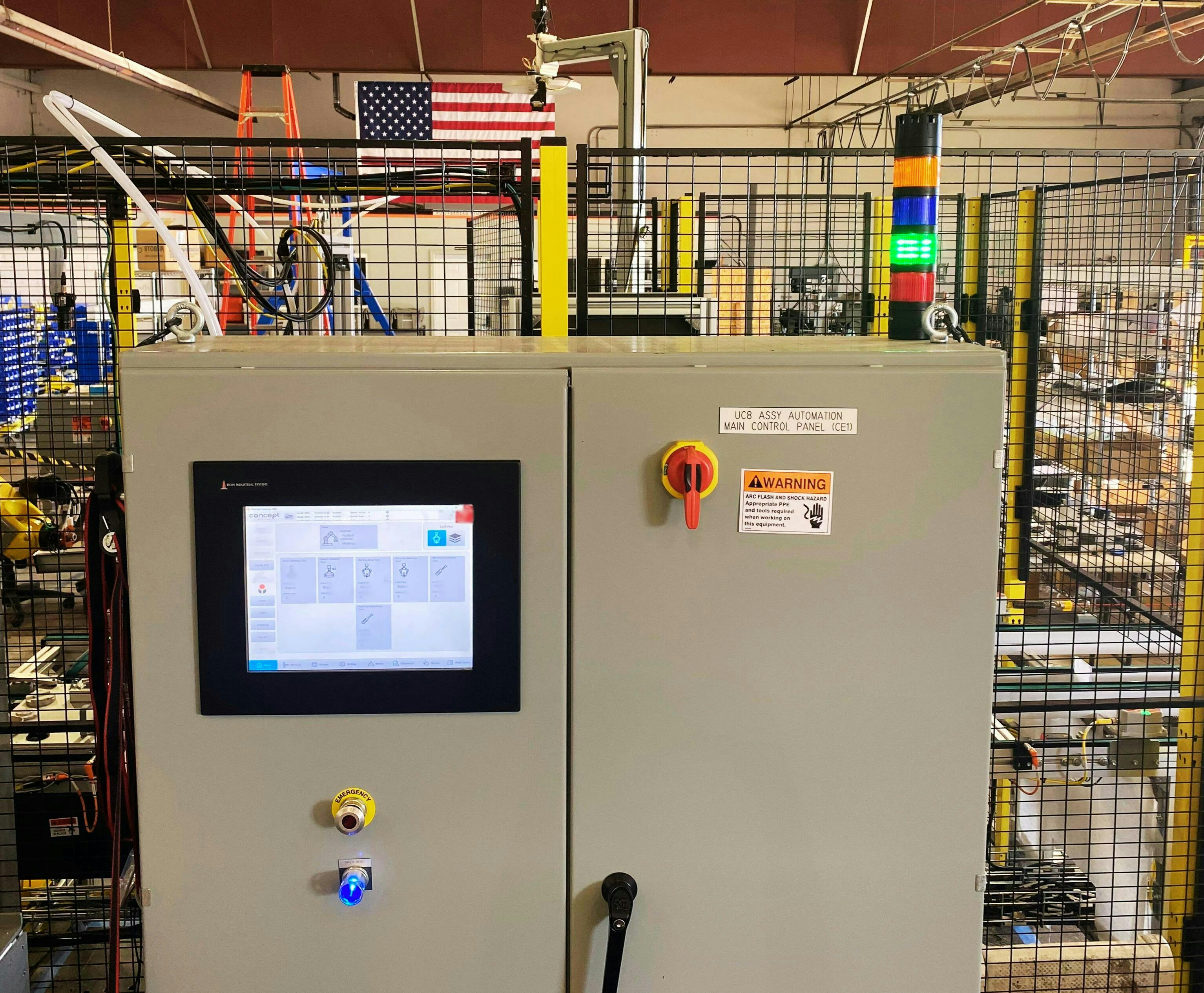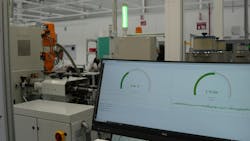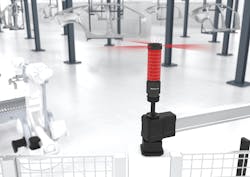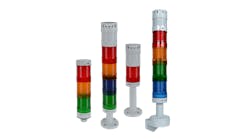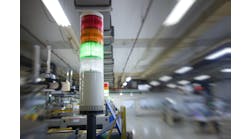A Control Design reader writes: I've seen basic standard stacklight colors on machines for years, but now it seems there are a variety of other colors for various conditions. Are there any downsides to adding colors or flashing patterns? Do they confuse operators? And what about "smart" stacklights with advanced communication technology? Is it overkill, or are we missing an opportunity by not including them on our machines?
Get your subscription to Control Design’s daily newsletter.
Answers
Safety and uptime
The evolution of stacklight colors and patterns offers a range of perspectives. To begin, it’s essential to understand the standards relevant to your industry. NFPA 79, Section 10.3.3 and the OMAC PackML guidelines are widely recognized in machine automation and control. However, many industries have their own formal and informal standards, so thorough research and alignment with your specific application are critical.
At Concept Systems, clarity and predictability in automation systems are paramount. The functional design document (FDD) should clearly outline what each stacklight signifies, and this should be reviewed and approved by the end customer. During startup and training, it's crucial to thoroughly test the stacklights and ensure operators are fully trained on their meanings. Providing robust reference materials for future training is also vital to eliminate any ambiguity regarding what each indicator represents.
The primary purpose of a stacklight is to draw attention to a specific condition and provide clear guidance on the necessary action (Figure 1). With advancements in technology, the options for visual indicators have never been better. The key is to adhere to established standards and meticulously document what each indicator represents and why.
In modern plants, visual indicators are crucial for enhancing process visibility, with the ultimate goals of improving safety, maximizing uptime and streamlining troubleshooting. When used effectively, modern light indicators enable operators to manage more tasks remotely, relying on visual cues to determine when their attention is required.
Some fun and innovative examples of modern stacklight indications go beyond simple machine status and are now broadcasting analog values such as tank levels and production speeds with stack indicators that illuminate from the bottom up to show levels (Figure 2). These modern stacklights can also alternate to show levels vs. multiple light patterns to depict various pieces of information with RGB lights to give way more indication possibilities to communicate process status. Interactive use is now becoming more common where lights that give operators specific repones to actions by visually responding to inputs such as transitioning an alarm to an acknowledged or reset state by varying color or brightness.
Ultimately, whether these enhancements are considered overkill or a missed opportunity depends on the specific needs of your operation. As the adage goes, "A penny saved is a penny earned." Continuous improvement is essential, and staying ahead means embracing innovations that offer genuine value.
Sam Cafferata, principal engineer / Concept Systems, system integrator in Albany, Oregon, certified member of the Control System Integrators Association (CSIA)
Flexible and smart
When evaluating new technologies, one must ensure that the technology adds either efficiency value or utility value that makes your system better than before and competitive.
The basic standard stacklights have been around for ages; the primary function was to show the state of the machine. These stacklights were placed strategically on top of the control box and would typically have three colors: red, yellow/orange, green—with predefined meaning. This age-old technology was great help for identifying the state of a machine when there were only a handful of machines in the plant. This technology has lost its charm as the plant floors are filled with automation and machines with the same color stacklights and visibility became a challenge. Even the forklifts and automated guided vehicles (AGVs) that we see on the plant floor have the same three stacklights. This created challenges for maintenance to be able to handle situations at times.
These stacklights were strategically placed on top of the controller boxes; the reason for that is to have easy connectivity to the control panel instead of creating long cable runs and multiple connectors. Controller boxes are not necessarily the tallest point to show the indication of problems any more. This makes it hard to see the state of the machine.
Yet another challenge with stacklights is wiring up the connectors and dedicating output cards in the controller chassis. Landing individual cables is a multi-step laborious activity, and it is prone to errors. As more machine builders are avoiding laborious error-prone activities by choosing diagnostic rich, easy-to-maintain and standardized connectivity-based solutions, connecting stacklights still requires age-old controller cards and chassis. Typically, with these hardwired solutions, there is no telling if the cable came loose or the light is worn out until your machine comes to a screeching stop, causing efficiency loss across the plant floor.
One of the advantages of multi-colored stacklights is that they can provide more specific feedback about the process and not only the state of the machine. For example, beyond the three lights, a fourth light with a different color could indicate machine issues due to material shortages, or a different color could indicate electrical-maintenance needs or mechanical-maintenance needs.
Having this multi-colored option could help tremendously with deploying the right resources to handle the situation from the get-go. This also helps with documenting issues and offers continuous-improvement opportunities.
Now combining multi-color options with state-of-the art communications technology could offer even more efficiency and utility benefits. The advent of multi-colored LEDs and communications, such as IO-Link, not only improved the energy efficiency but also added features like making the same three-stack-high lights change colors and change styles.
I already explained the benefits of color or blinking, providing added information, now let's talk about style. We all have used stacklights as one and the only style to demonstrate the state of the machine. Now with IO-Link technology, we can change that same stacklight as a level-indicator light or a run light.
As a level indication, one can map 8-bit or 16-bit status of measurement to the smart stacklight, and the light will now indicate state of that measurement—may it be distance, temperature, pressure or anything else, for that matter, utilizing the same smart light for indication of machine state, as well as for indication of a certain aspect of the process. There are a few examples I could provide.
Utilizing this light on top of the bowl feeders to indicate the amount of material inside the bowl-feeder system or showing temperature of the boilers along with machine state, or showing the state of the pallet in a palletizing application, so that the forklift driver moving around the plant can determine which palletizing machine needs to be attended first, avoiding unnecessary stoppages of the system due to unavailability of the forklift.
Some of these smart lights also offer another feature called run-light mode, in which there is a running segment and a background segment. Based on the severity of the indication need, the running segment speed can be adjusted, as well as the color can be defined to indicate process-related status. Background segment can be used as indication of the health of the machine or, simply put, as a stacklight.
As an example, the background color green could indicate machine is operating fine, but yellow running segment could be indication of material flow is slowing down and could be an issue if not addressed soon (Figure 3).
Additional features of these smart lights, such as chasing light or adjusting colors, intensity of colors, blinking and frequency of blinking, all can be adjusted due to IO-Link or similar communications. IO-Link-based smart lights would also simplify cabling as there is single three-pole cable that connects directly into the IO-Link master ports providing flexibility, as well as functionality.
In summary, my suggestion is to evaluate particular applications or situations to see if adding these features improve plant-floor efficiency or add any utility value before selecting these smart lights that offer a lot more than just stacklight functions.
If you already have IO-Link on your automation, it is practically a no-brainer to add smart lights to the system that allows replacing laborious wiring and assembly and further reduces hardware in the control panels.
Shishir Rege, automation and technology specialist, IIoT, smart manufacturing / Balluff
Let your application and culture be your guide
In most cases, a modular stacklight with green, yellow and red colors may be completely sufficient. So, why is the industry moving toward more colors and greater complexity?
Traditional modular stacklights come in various colors, flashing patterns and rotating effects. Engineers in different departments place orders with purchasing and then wait until all parts have arrived before installing them on their machines. But this is where the problems begin:
- What if one or more color segments are delayed?
- What if engineers working on different machines choose different color schemes? Will this result in more spare units having to be kept in reserve?
- If a specific flashing pattern is not available, is it okay for the engineer to spend extra time programming that pattern into the programmable logic controller (PLC) or control system?
Can there be too many colors? I’m not sure, but as processes become more complex, engineers may overload each color with different meanings, leading to possible confusion; this also means more training costs (Figure 4). Fewer colors can lead to more stoppages if detailed or specific information cannot be adequately communicated.
And this is not just a question of too many colors, a signal light can come with different modes:
- traditional stacklight mode
- autoscale mode—all nine segments are used here, regardless of whether you select one color, two colors, six colors
- filling-level mode —an analog signal indicates the fill percentage
- individual mode—each of the nine segments can be controlled individually.
Is there too much complexity with newer signal lights? The answer is: It depends. How simple do you want ordering to be? How much flexibility do you want in the future? How easy do you want the installation to be? How much information are you looking to communicate? What branding do you want to apply? In which environments will these be used? Your specific application and company culture will likely lead you in the right direction (Figure 5).
Michael McCabe, product manager / Pepperl+Fuchs
The integrated factory floor
Flexibility is the name of the game today on the factory floor. While the standard five colors are effective and universal, what do we do in custom situations? Let’s say you have a pallet station on a factory floor. You need a pallet moved to the next station. One option might be to add another color to the light stack, like purple, to call the fork truck. With advancements in stacklight technology, this is now achievable.
Stacklight manufacturers have been redesigning the way we think of stacklights for a couple of years now. We now see RGB LEDs, connectivity, buzzers, sirens and even modularity where you can build your own. All these new advancements mean added flexibility for the factory floor.
Recently, I was on a factory tour where the manufacturer incorporated Microsoft Teams into their design (Figure 6). Using andon stacklights with a pre-programmed keypad, the worker could send an automated message through Teams to the floor supervisor while also illuminating a “help needed” light. The five standard colors are still necessary, but the added lights provide flexibility. From calling fork trucks to calling a floor supervisor, the factory floor is more integrated than ever. These new stacklight capabilities are a great tool for any factory floor looking to increase efficiencies and process improvements.
Eric J. Halvorson, senior marketing technology manager, automation & control / DigiKey
IO-Link-capable signaling columns
Signaling columns are installed to visually display the status of machines on site. These are used on machines or in automated processes to control complex processes, as visual or acoustic warning devices in emergency situations, or to display individual production stages. Some signaling columns can be controlled either via conventional wiring or via IO-Link (Figure 7). In the conventional version, parameters are assigned in advance via a USB interface. The IO-Link-capable signaling columns can be configured at any time, both from the program or from the PG/PC with an active online connection to the CPU. At the same time, the IO-Link-capable signaling columns have all the advantages that come with using IO-Link devices.
Adding colors and flashing patterns enhances communication. More colors and patterns can convey specific statuses or alerts, improving clarity and response time. Customizing different colors and patterns can be tailored to specific processes or machinery, making it easier to identify issues quickly. Operators must be trained to recognize the different colors and patterns.
Having a stacklight with advanced communication can provide real-time data and diagnostics, improving overall efficiency and maintenance. IO-Link allows for remote monitoring and control, reducing the need for physical presence. Finally, these signaling columns can be integrated into larger automation systems, providing a more cohesive and intelligent operation.
Robert Guajardo, product manager / Siemens Industry USA
